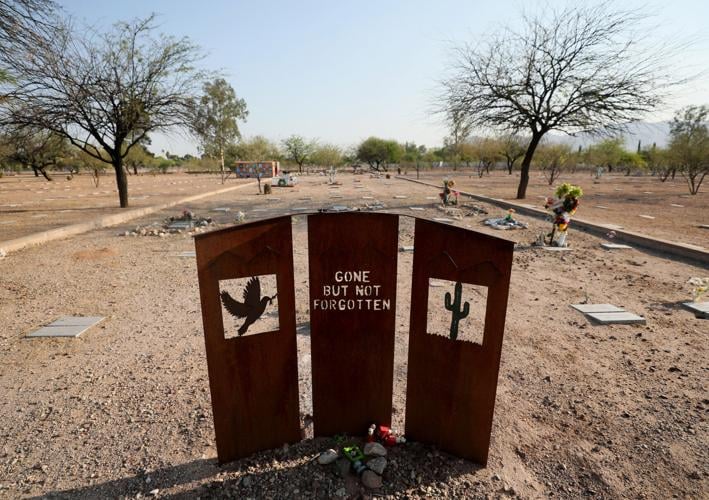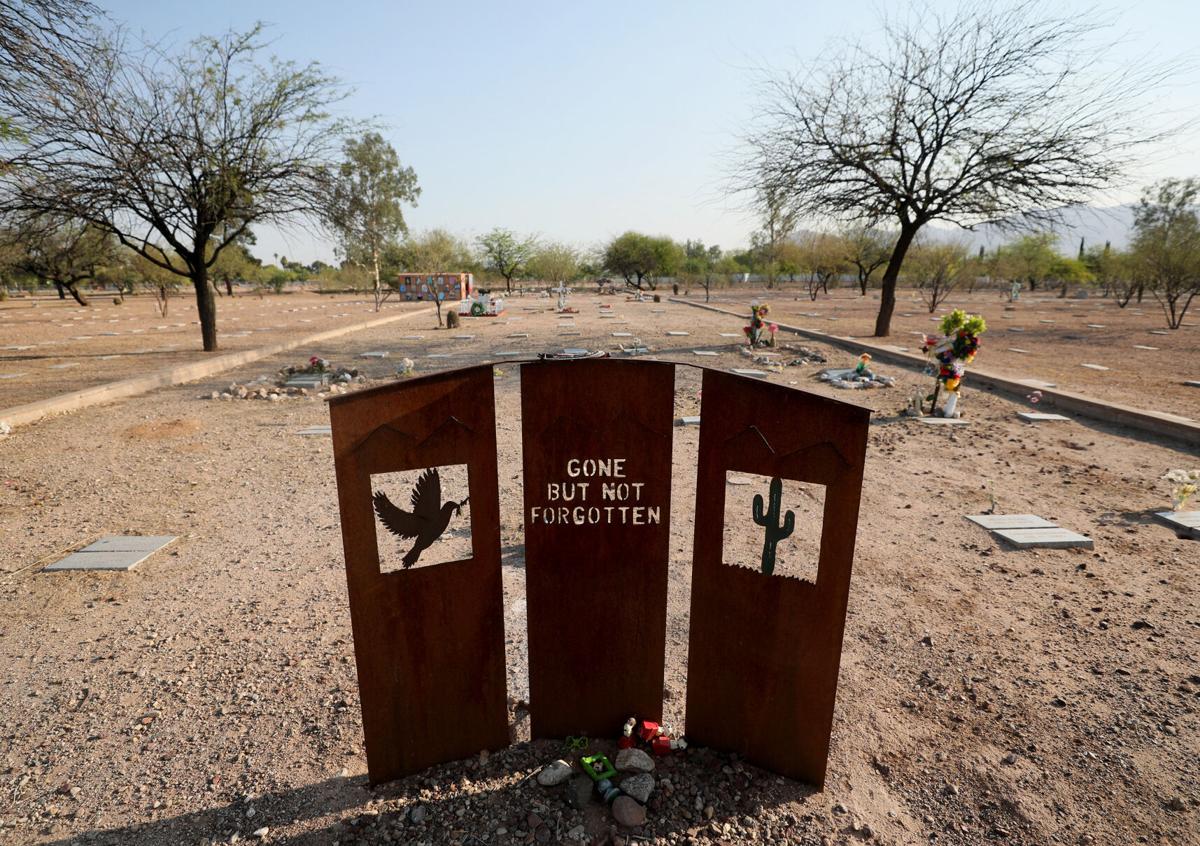When the Pima County Medical Examiner’s Office took over operations of the county’s indigent cemetery, Dr. Gregory Hess began a monumental task: Trying to put names to the hundreds of remains of unidentified people interred there.
Since 2018, the medical examiner’s staff has recovered and is working to identify not only more than 800 cremains from the cemetery, but also the remains of more than 50 unidentified people buried there dating back to the mid-1960s.
Hess, the county’s chief medial examiner, said most of the 800 cremated remains disinterred from columbaria at the cemetery are believed to be undocumented border crossers who died on their journeys north.
The office is using a federal grant to also exhume the remains of unidentified people long buried in the cemetery in hopes of using their DNA to find relatives, or possibly solve a cold-case crime. There are plans to exhume more remains buried in graves with no names.
In 1955, the county first purchased land from Evergreen Cemetery for the final resting place for those whose families can’t afford burials, homeless people who died on the streets and undocumented migrants who died crossing the desert. It is known by some as Pauper’s Field, a dirt area on the west end of Evergreen Cemetery, 3015 N. Oracle Road.
Now the recovered cremains are at facilities at the medical examiner’s where staff is doing forensic analysis and searching national databases, including the National Missing and Unidentified Persons System, or NamUs, in hopes to find names for the many “John Does” and “Jane Does.”
The identifications could be possible through DNA of family members that are in the databases, said Hess.

Dr. Greg Hess, chief medical examiner, with remains of an unidentified person in the anthropology lab at Pima County Office of the Medical Examiner.
“Families continue looking for their loved ones, and it is difficult to find closure when they do not know what happened,” said Hess, explaining that consulates, private organizations or humanitarian groups work with families to have their loved one’s remains repatriated.
In 2005, state law changed and an unidentified person could be cremated, explained Hess. He said DNA samples were taken from these individuals, mostly from bone or hair samples, before the cremation. Other identifying information could include fingerprints, dental and medical radiographs.
“The majority of the dead were found in the Southern Arizona desert and are suspected to be border crossers,” he said.
“This is an ongoing project and remains are identified every couple of weeks, and most died in 2000 and later. We work with families and consulates in Mexico, Guatemala and Central America. There are DNA matches in databases or family is found and DNA samples are obtained from family,” explained Hess.
Days ago, Hess held an urn that contained the ashes of a man who died in 2006 and was cremated two years later as an unidentified person and put into a columbarium at the indigent cemetery.
This man, a migrant, was identified four months ago by family through a facial photograph that Hess said was posted by staff in NamUs years ago. His “family intends to come to us to retrieve the remains,” Hess said.
The unidentified will remain indefinitely in the medical examiner’s facilities until they are identified. And remains that are identified, but are unclaimed, will be returned to the cemetery for interment.
Office of the Medical Examiner staff is not only working to identify cremains, which is a regular part of their work under its proposed annual budget of $4.8 million with 39 full-time employees, but also through a 2019 federal grant, which has contracted personnel to exhume coffins with unidentified remains.

Columbaria containing cremains of indigent people in the Pima County Cemetery.
The exhumations and other related work are paid for by a $175,359 grant from the National Institute of Justice. The institute, under the U.S. Department of Justice, collaborates with medical examiners nationwide to solve the deaths of unidentified persons and funds all DNA samples and investigations through grants or through the laboratory that works for the federal agency, Hess said.
In addition to the unidentified remains that have already been exhumed from the cemetery, another 10 are expected to be dug up before the end of the year, Hess said.
The majority of the individuals were exhumed from 32 coffins, several coffins containing more than one skeleton, and often partial remains that were separated in individual body bags within each coffin, documents state.

Dr. Greg Hess, holds the remains of a person identified by Pima County Office of the Medical Examiner. Hess wrote, "The white sticker is the original placed on the container by the funeral home who did the cremation. The orange tag is the decedent's name as he was identified in February of this year. This decedent died and was examined at the OME in 2006. He was released to the indigent interment program (IIP) for interment as an unidentified person in 2008. He was cremated in 2008 and his cremains were here placed at the cemetery in one of the two columbaria located there. We (the OME) removed his cremains from the cemetery (along with all the other unidentified cremains) in 2018 when we took over the IIP for the County. He was identified in February of this year circuitously through family recognition of a facial photograph we posted in NamUs some years ago. The family of the decedent intend to come to us to retrieve the remains."
All of these remains that were buried from 1964 to 1999 will have DNA samples collected and enhanced forensic analysis done — scientific work that was not available when the remains were buried.
The forensic work is underway, and it is too early before possible matches can be done, said Hess.
The funding increased “the OME’s capacity to analyze cases and provide hands-on training in a highly specialized field,” according to documents. “For individuals whose death was ruled as a homicide (five homicides and a sixth death to still be determined) this project may aid in the possible apprehension of the perpetrator(s) if the victims are identified ... and returning their remains to their loved ones with potential justice served,” records state.
Local law enforcement agencies that investigated the homicides were contacted and are supportive of efforts to apply new techniques and technologies to the investigations, and are hopeful in resolving the cases.






